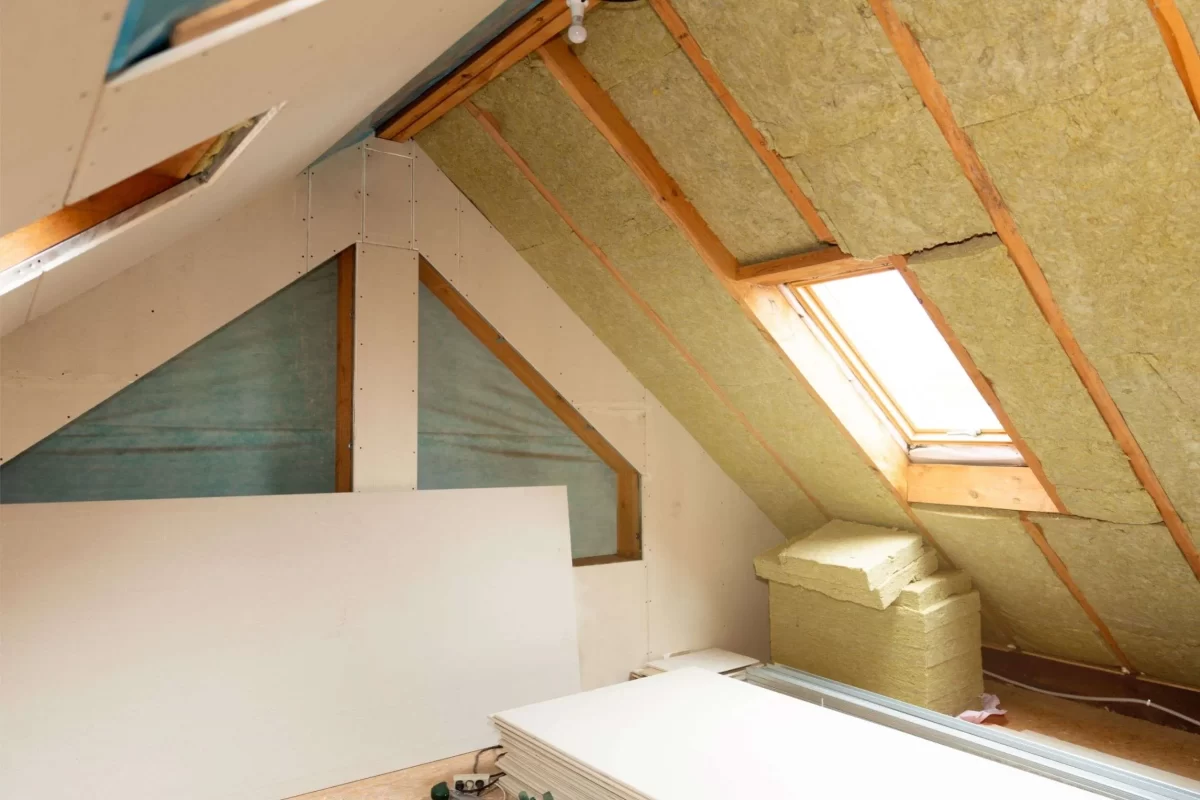Unlocking the Full Potential of Attic Insulation in Navarro County, TX Homes

Attic insulation has a direct influence on household comfort, HVAC system performance, and long-term energy efficiency. In Navarro County, where summers are long and scorching with temperatures often exceeding 95°F and winters drop into the 30s, insulation must manage both extremes. The right attic insulation acts as a year-round thermal shield, stabilizing indoor temperatures, reducing the need for constant HVAC cycling, and mitigating costly energy losses. The correct insulation strategy leads to noticeable savings on monthly bills and better temperature consistency throughout the home.
Unlocking its full potential depends on more than just R-value—it requires selecting the proper type of material, ensuring it is installed correctly, and accounting for climate-specific demands unique to Central Texas. Immediate improvements can be seen when insulation addresses air leakage, vapor control, and attic configuration. The information presented below is grounded in firsthand experience with installations in Navarro County homes, from Corsicana to Kerens, offering practical takeaways for homeowners.
How Insulation Works in Navarro County’s Climate
Attic insulation works by slowing the flow of heat between the interior of the home and the attic, which is typically an unconditioned space. In Navarro County’s mixed climate, this means resisting solar heat gain during blistering summers while conserving indoor heat during brief but cold winters.
Region-Specific Performance Considerations
- Summer solar load – The sun heats roofs to 140°F+ in summer. Without proper insulation, attics radiate this heat downwards.
- Humidity management – Central Texas humidity promotes condensation and mold without a moisture-resistant barrier.
- Cold retention – Even during short winters, heat loss through uninsulated attics leads to energy waste.
- Pest control – Inadequate insulation can attract pests seeking warmth, which is common in rural Navarro homes.

Comparing Insulation Options for Attics
Different insulation types vary in thermal resistance, moisture control, air sealing capacity, and return on investment. Below is a practical comparison focused on suitability for homes in Navarro County’s climate and architectural profiles.
Attic Insulation Comparison Table
| Insulation Type | R-Value per Inch | Air Sealing Ability | Moisture Resistance | Durability | Estimated Cost (per sq. ft.) |
| Open Cell Spray Foam | 3.6 – 3.9 | High | Low | Medium | $0.45 – $0.65 |
| Closed Cell Spray Foam | 6.0 – 7.0 | Very High | Very High | High | $1.00 – $1.50 |
| Fiberglass Batt | 2.9 – 3.8 | Low | Low | Medium | $0.30 – $0.45 |
| Fiberglass Loose Fill | 2.2 – 2.9 | Low | Low | Low | $0.25 – $0.40 |
Bonus Tip: In Navarro County homes with drafty attics, closed cell foam performs best in controlling both temperature and moisture by creating a complete air seal.
Technical Specifications and Suitability
| Specification | Open Cell Foam | Closed Cell Foam | Fiberglass Batt | Loose Fill Fiberglass |
| R-38 Coverage Depth (inches) | ~10.5″ | ~6.5″ | ~11.5″ | ~16″ |
| Vapor Retarder Required? | Yes | No | Yes | Yes |
| Mold Resistance | Moderate | High | Low | Low |
| Best Installed In | Conditioned attics | Unvented attics | Vented attics | Vented attics |
| Retrofit Compatibility | High | Moderate | High | High |
Things to Consider Before Making a Decision
- Attic framing and depth – Not all attics accommodate thick insulation layers. Closed cell foam works better in tight rafter spaces.
- Conditioned vs. unconditioned attic – Conditioned attics (inside thermal envelope) benefit from spray foam applied to the roof deck.
- Air sealing – Gaps around vents, chimneys, and wiring reduce effectiveness. Spray foam offers superior sealing.
- Utility rates – High seasonal electricity use in Navarro County makes insulation payback periods shorter.
- Compatibility with existing systems – Certain HVAC systems require ventilated attics; insulation choice must align.
- Installation access – Some older homes have tight eaves and low-pitch roofs that complicate installation.
Bonus Tip: For homes near agricultural fields or industrial sites, closed cell foam also helps reduce dust infiltration.
Common Questions When Choosing Insulation
How much insulation should be added in Navarro County?
Attics should have R-38 minimum, but R-49 is optimal, especially in homes with older HVAC systems.
Can insulation reduce summer cooling bills?
Yes. According to the U.S. Department of Energy, proper attic insulation can reduce cooling costs by up to 20%.
Is it better to remove old insulation first?
Removing old, degraded insulation prevents mold transfer and ensures new material performs optimally. Always consult a professional.
What about fire resistance?
Closed cell foam has superior fire retardants and is code-compliant when installed with ignition barriers.
Services Available for Attic Insulation by D&D Insulation LLC
Open Cell Insulation
Expands on contact to fill irregular cavities, ideal for soundproofing and interior attic applications.
Closed Cell Insulation
Provides high structural integrity and vapor protection. Best used in roof decks and humid or flood-prone areas.
Fiberglass Batt Insulation
Affordable and familiar option for accessible, vented attic spaces. Performs well when installed with proper air barriers.
Fiberglass Loose Fill Insulation
Effective for topping off existing insulation or covering hard-to-reach attic corners.
Spray Foam Roof Insulation
Installed beneath roof sheathing for maximum heat reflection and reduced attic temperature swings.
Paint Over Spray Foam
Essential for exposed foam areas to protect from UV degradation and prolong insulation lifespan.
Frequently Asked Questions About Attic Insulation
What is the typical lifespan of different insulation types?
Spray foam can last 30-50 years. Fiberglass may settle or degrade after 15-20 years, especially in humid areas.
How does attic insulation influence property resale value?
Insulation upgrades can raise home value by making energy costs more predictable and improving buyer appeal.
Can insulation be a DIY project?
Blown-in fiberglass can be DIY-friendly. Spray foam requires trained installers due to chemical handling and curing.
What signs suggest it’s time to upgrade attic insulation?
Temperature swings, high utility bills, or visible settling and moisture marks in the attic are key indicators.
Are there any rebates or incentives for insulation?
Yes. Federal energy efficiency tax credits may apply to insulation upgrades that meet program criteria.
Ready to Achieve Lower Energy Bills and Better Comfort?
Unlocking the full potential of attic insulation in Navarro County homes means choosing the right product, understanding the climate, and ensuring proper installation. Apply these insights now: Schedule your attic assessment with D&D Insulation LLC. Benefit from proven solutions tailored to Navarro County homes.
Contact D&D Insulation LLC at (903) 389-5705 or office@dndinsulation.com
Reviewer:
Henry Turner has 9 years of experience in spray foam insulation. He reviewed this article and helped shape it into a clear guide for companies working to build trust in their local market.










